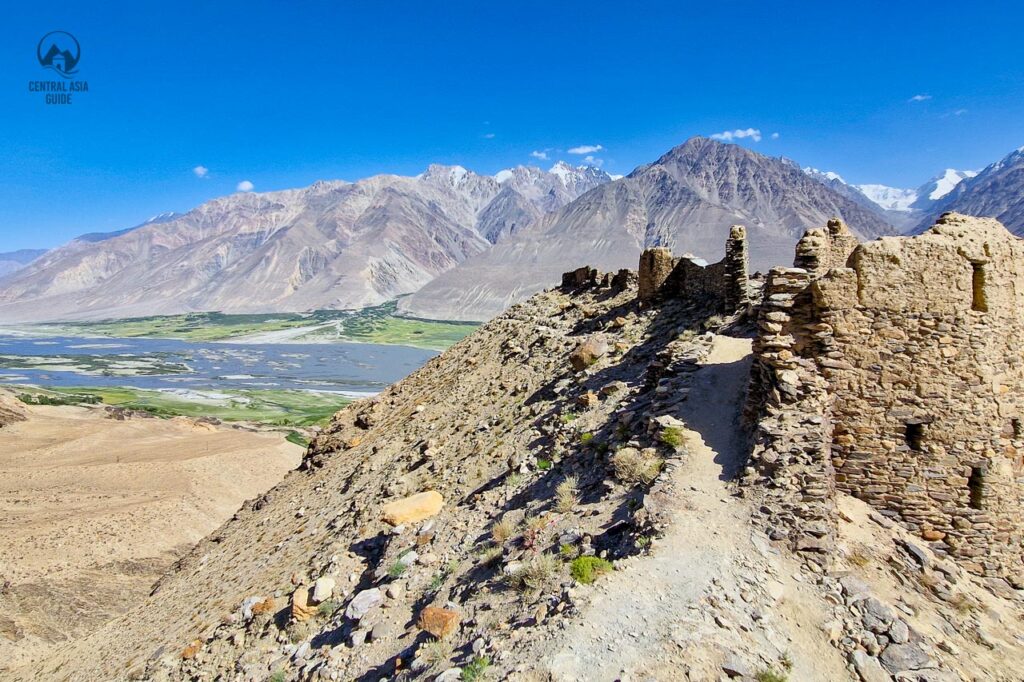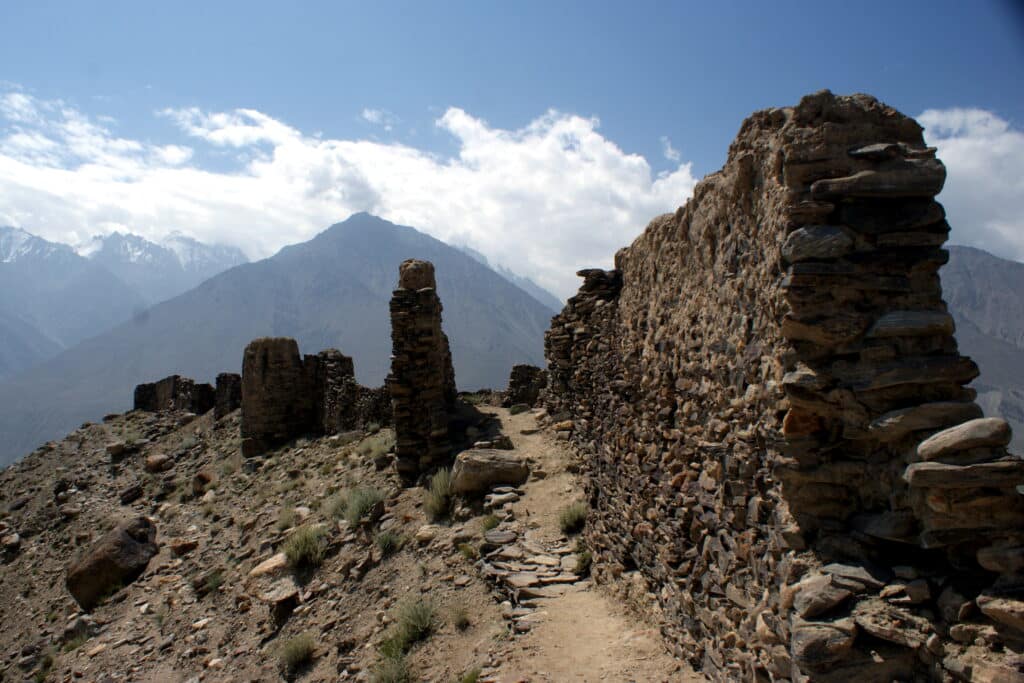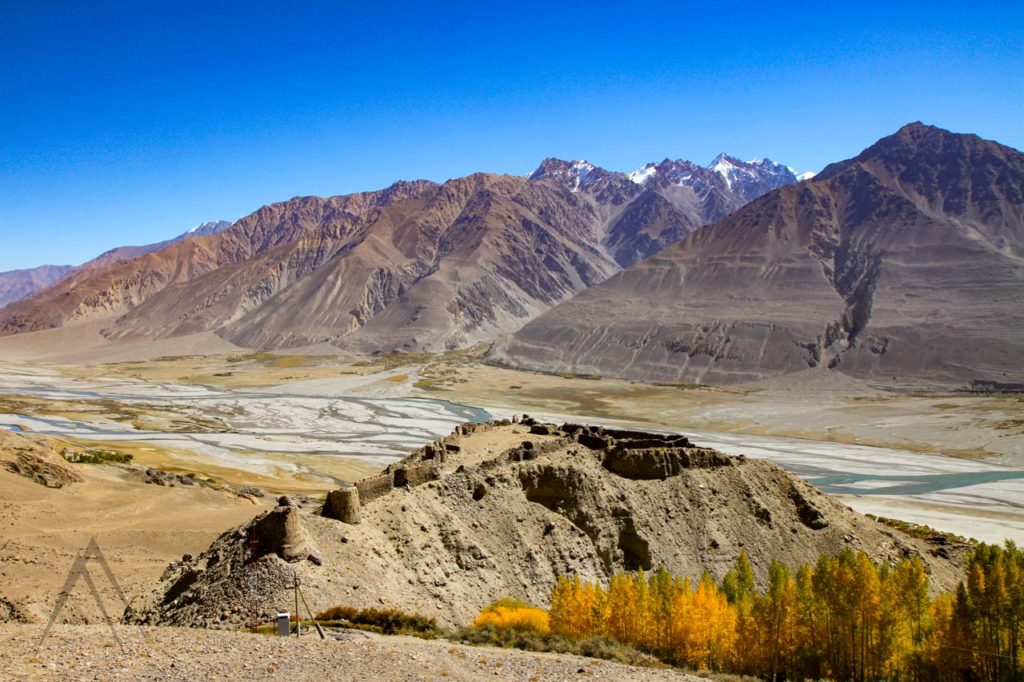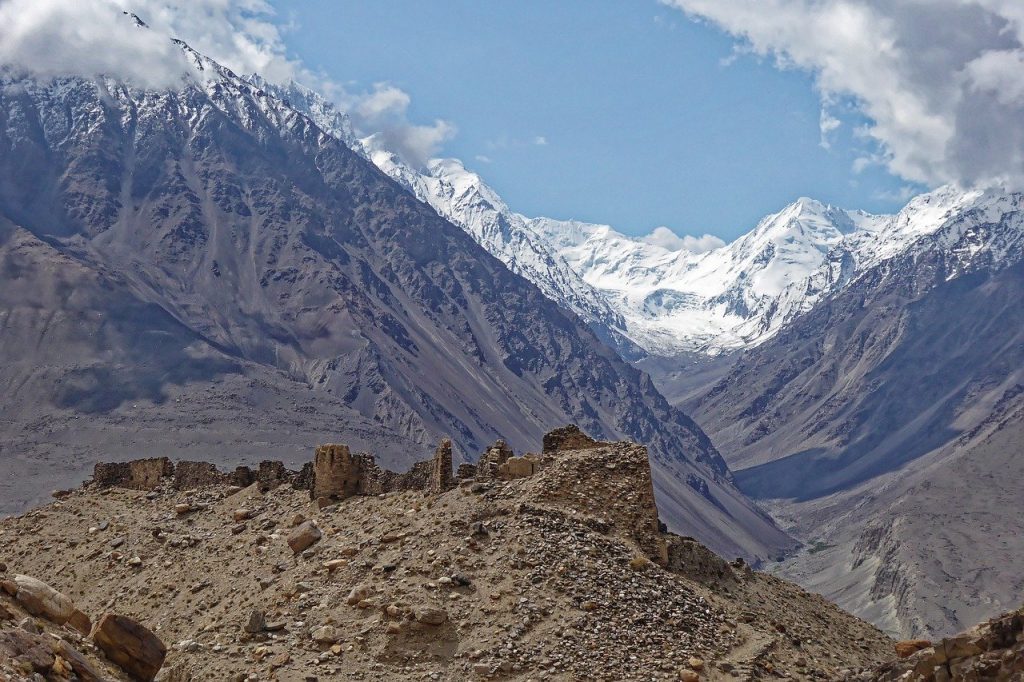Yamchun Fort
Yamchun Fortress
The Yamchun fortress is also known as Zamr-i-Atash-Parast (Fortress of the fire worshippers, meaning the Zhoroastrians) and Kafir-Qala and is perhaps the most impressive and oldest monument in Wakhan, built on the top of the cliff overlooking the valley. Construction of the fortress Yamchun dates back to the 3rd century B.C., and it is a bit older than another famous fortress in the Wakhan valley – fortress Kah-Kakha. Once this fortress had two functions: control over the flow of people and goods across Wakhan valley and in defense in case of foreign raids. The Yamchin fortress is located about 8 km from the Yamg village of gentle uphill or 4 km of steep climbing along trails. If you walk further north from Yamchun fort you will find the Bibi Fatima hot spring.
It is believed to have been the greatest defense fortification in the ancient Wakhan and had high stone walls and round watchtowers. The local legend says that the fortress was built by kings-brothers Qakhkaha and Zangibor. The fort performed a key role on the great Silk Road leading from Pamir to Bactria, India, Iran and back controlling the traffic, cargo and security in the region. Yamchun Fortress overlooks large swathes of the Wakhan corridor and large sections of the Hindu Kush mountains in the northernmost Afghan territories. How much of the original fortress is visible today is questionable since the ancient structure was expanded between the 10th and 12th centuries.


Yamchun Fortress
The fort with stone walls and towers is located on the height of 3000 m above sea level surpassing the valley of the river Panj running 400 m below. Only the upper bastion, that was well protected, has survived from the entire fortress. The place chosen for the construction of the triangular-shaped Yamchun fortress was excellent as the mountainside is protected from two sides with deep gorges of rivers, so it was hard to assault the fortress from this side, and the third side has a steep slope where they made a cascade of walls and towers, thus if the lower tier would have been lost, defenders could retreat upwards still keeping the strategic advantage. The protected part of the fortress has an area of approximately 300 sq. m and in the far past, the fortress used to have a territory of 75 ha.
The walls of the Yamchun fortress are made of stones, of different rocks, some of which were delivered from afar. The triangular shape fort is divided into 3 sections. The first section includes a citadel with a bastion and a barracks. This section was surrounded by a wall and strengthened with round towers. Two other sections are open grounds for combat operations. Every ground was surrounded by thick stone walls and fortified by 36 towers. The outside walls are 2 meters wide while the inner walls are 50-60 cm wide. Furthermore, thanks to the investigation of masonry, it was discovered that thin layers of timber were added during construction that would add flexibility and strength in case of earthquakes. The towers were built in chess order and with a small negative angle to improve visibility at the fortress basement. Gun slots exist both outside and inside walls increasing the defense capability. The building materials must have been delivered from remote locations, since metamorphic rock, granite and slate rocks, biotite pieces and other forms of stones are not found in the close neighborhood.


Yamg village
The Yamg village lies 90 km east of the regional center Ishkashim. Yamg owns a special place among the other settlements of the Vakhan Valley. It was the native village of Sufi Muborakkadam (1843 – 1910), a local self-taught scholar, theologian, calligrapher, musician, poet and inventor. For his natural talent, he is often nicknamed Muborak of Vakhan and Leonardo da Vinci from Yamg. His life, though not so long, was full of good deeds and he never left his village. The residents are proud of their fellow villager and remember him as man of honor .The locals have organized an impressive museum in one of the old houses to honor his memory. The museum contains musical instruments made by Muborak himself, a loom, books that are written by the scholar (Muborak also made the paper for them) and a number of household utensils. The old ceiling in the building is painted in an original way, depicting people, animals and plants interwoven with calligraphic inscriptions.